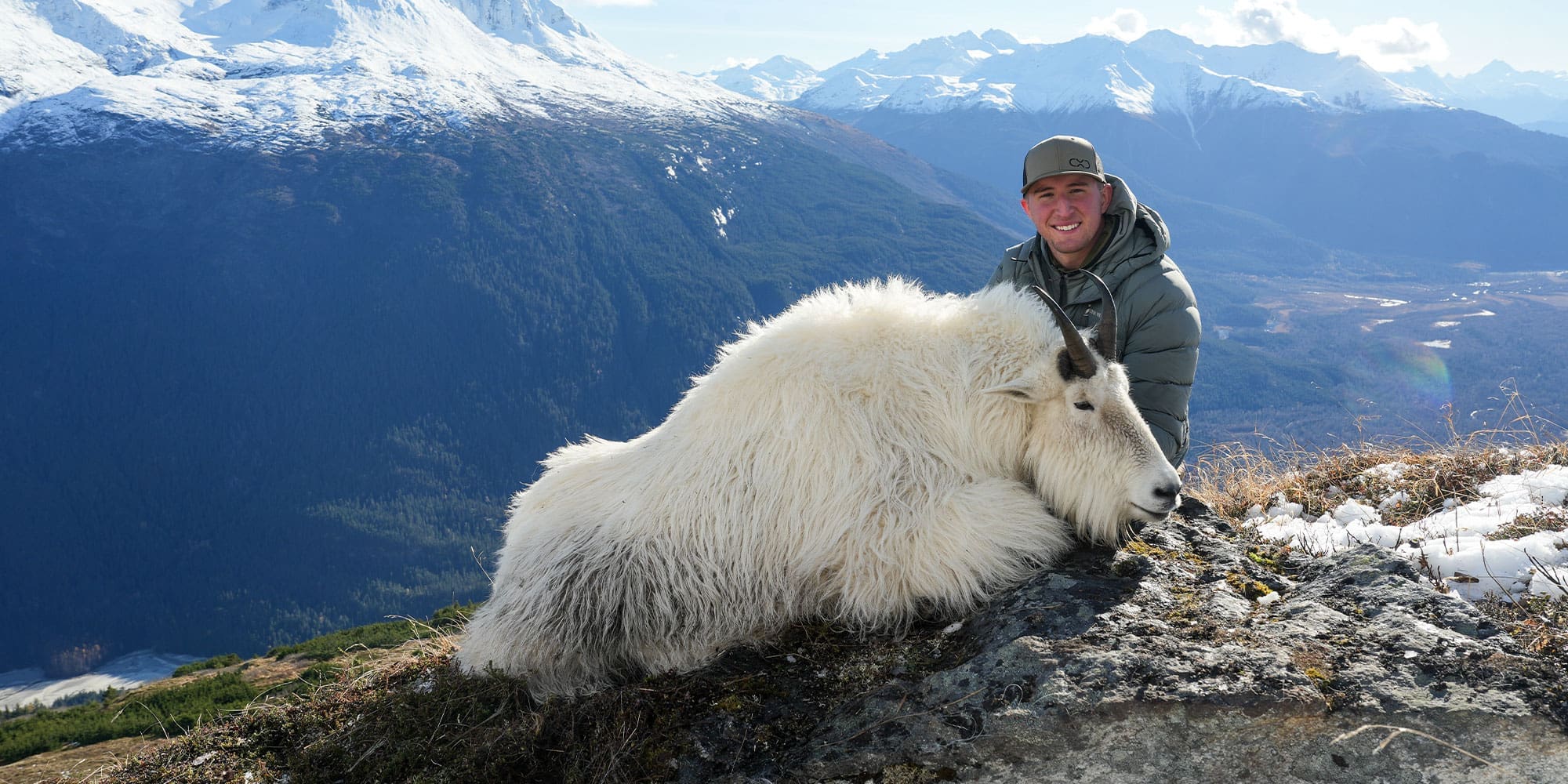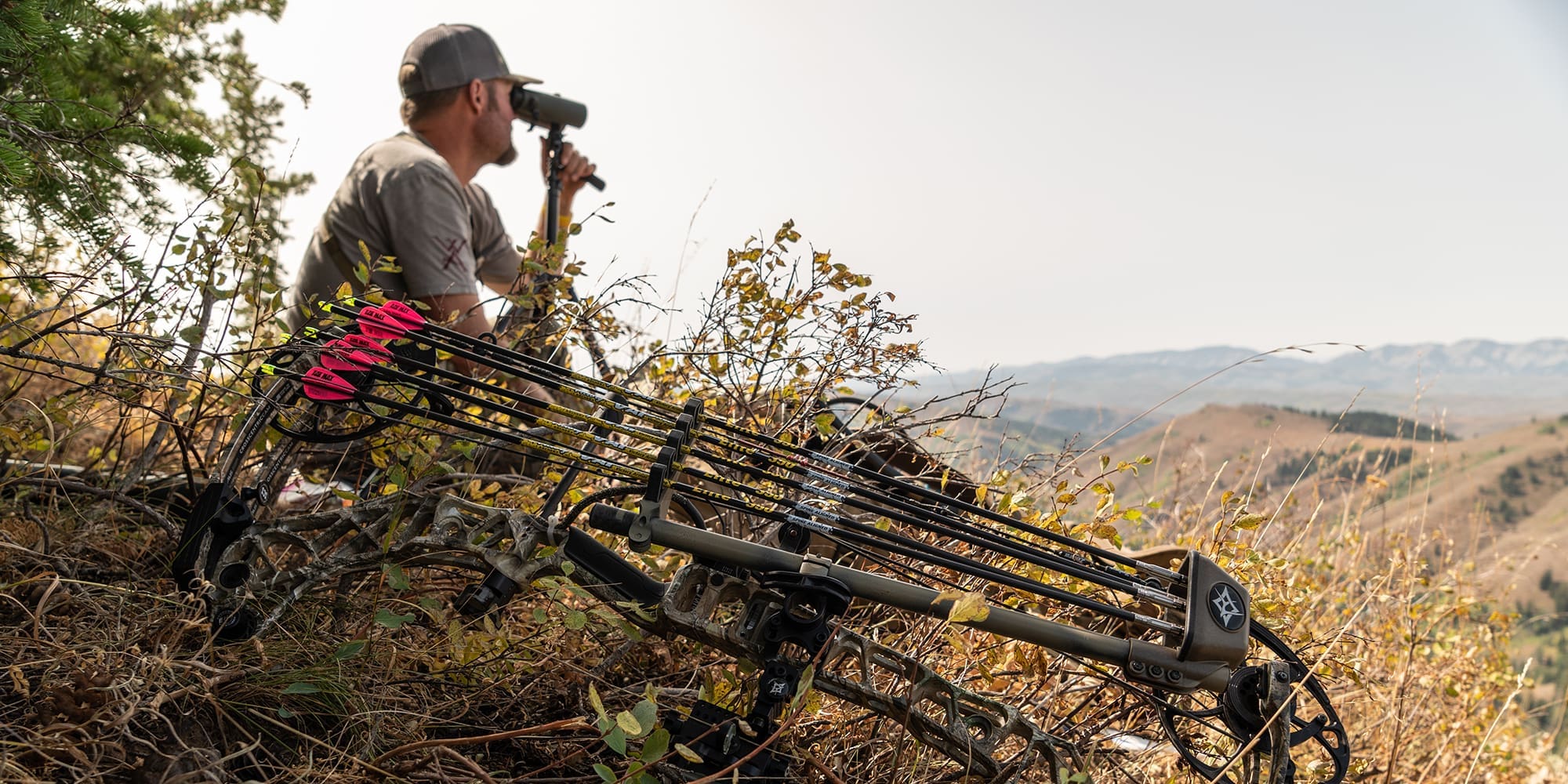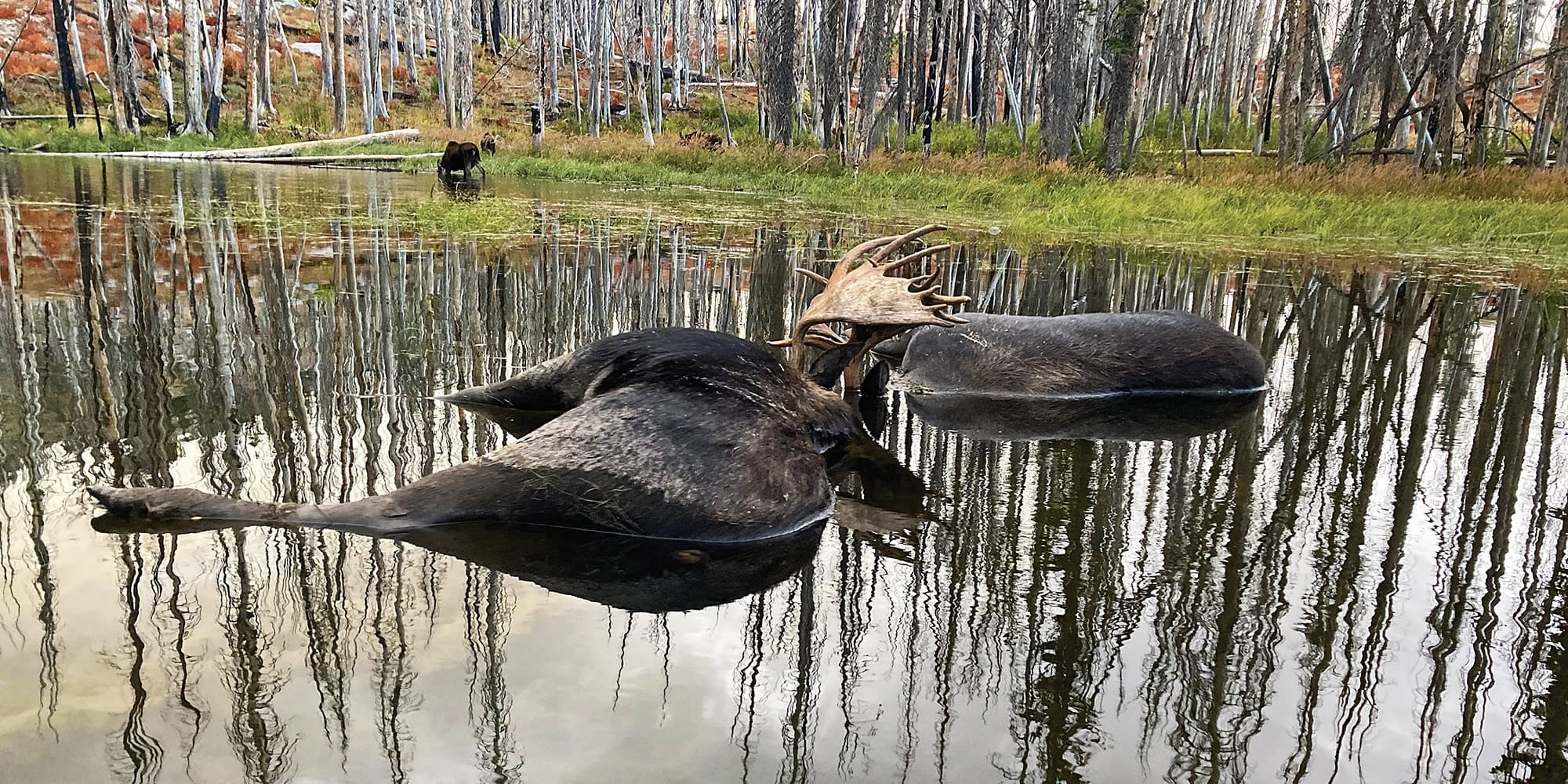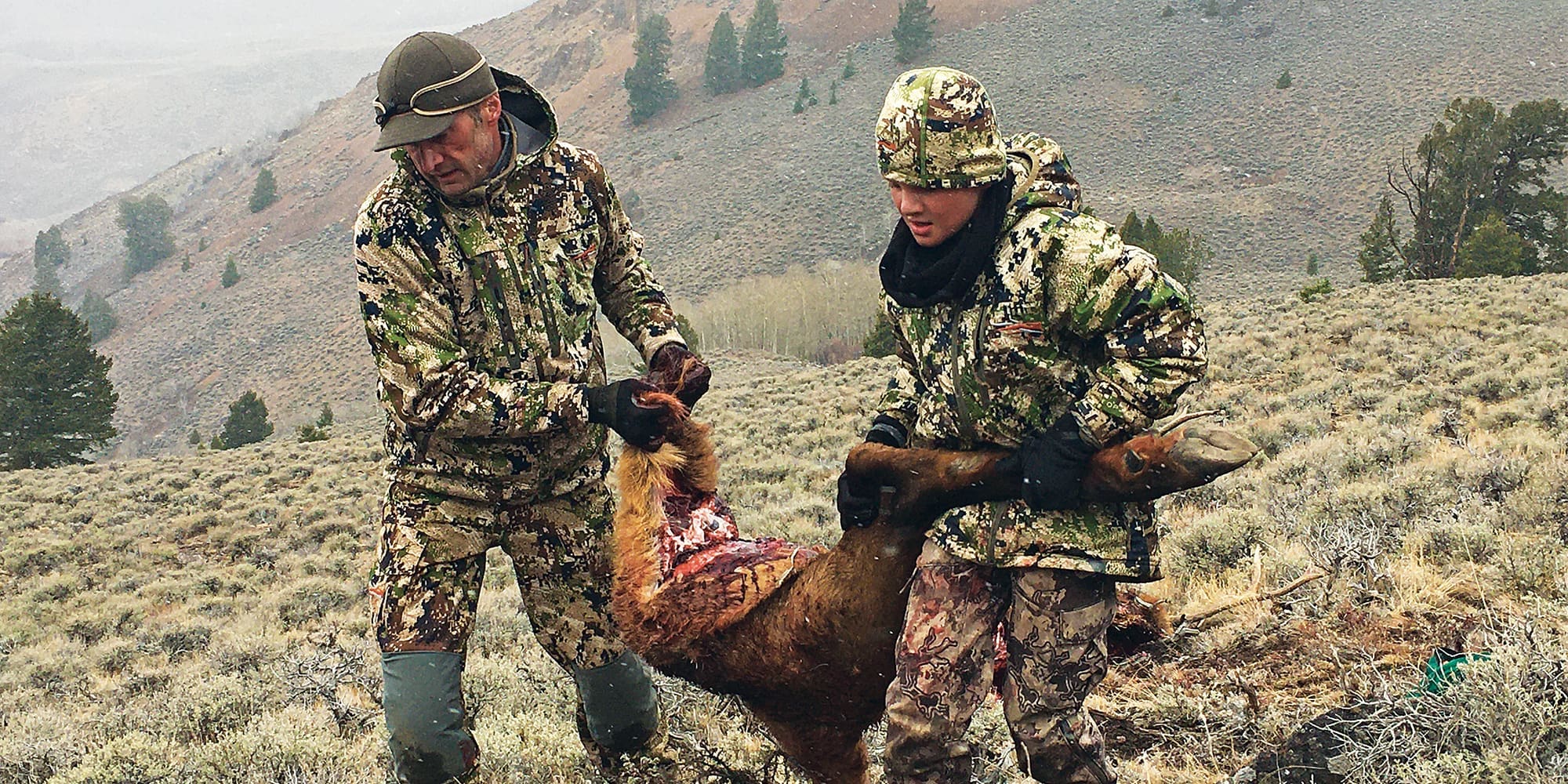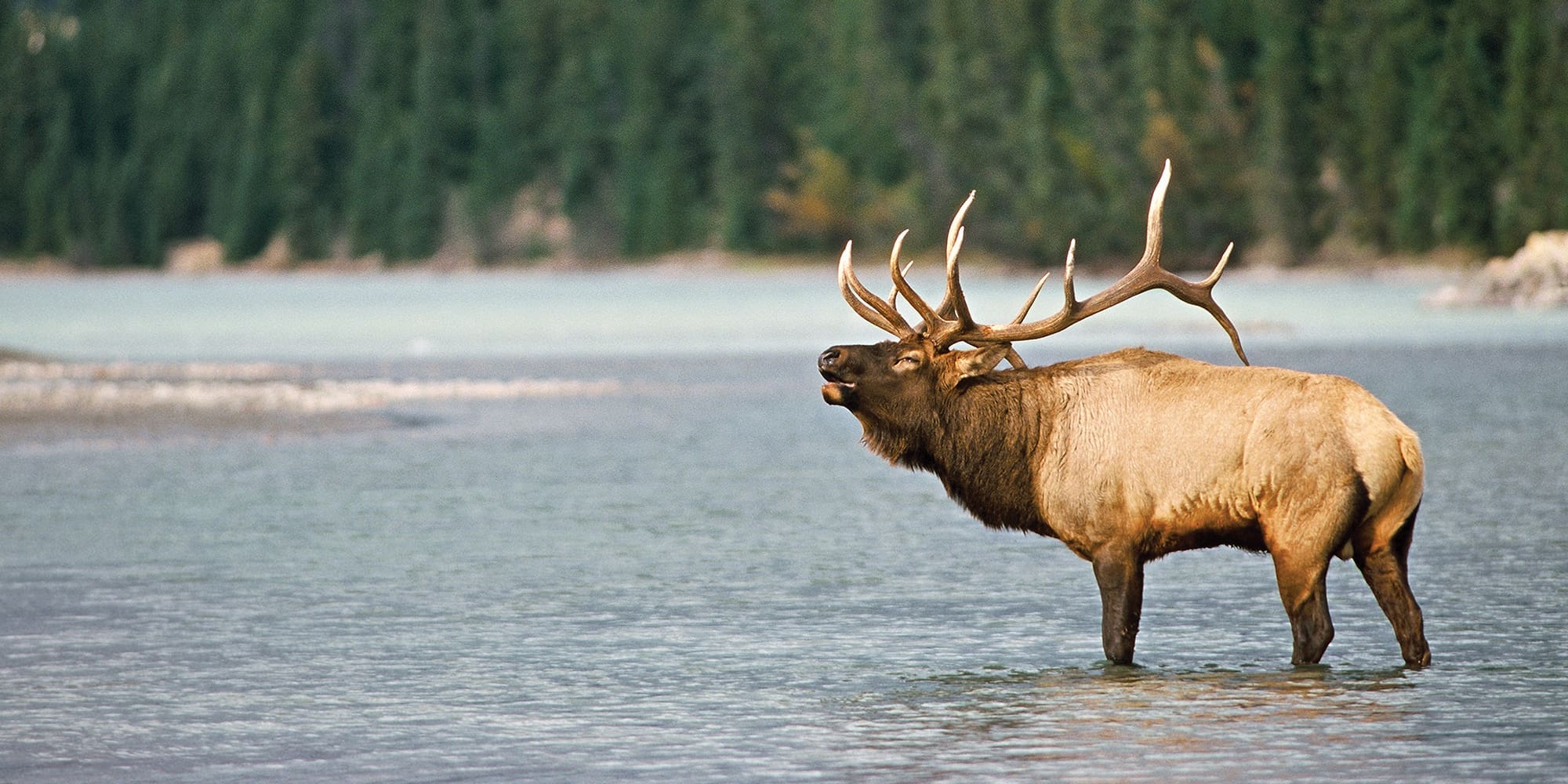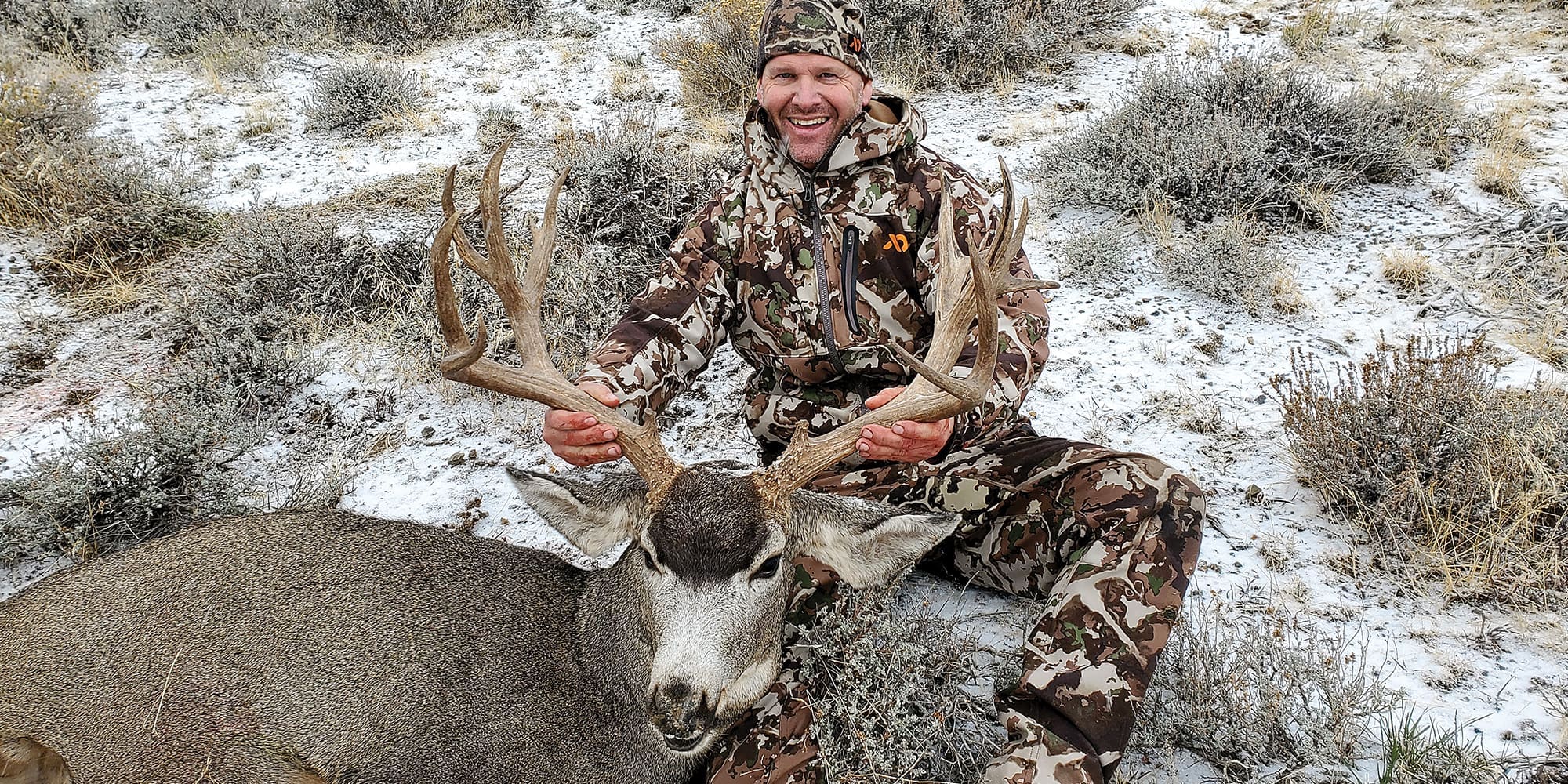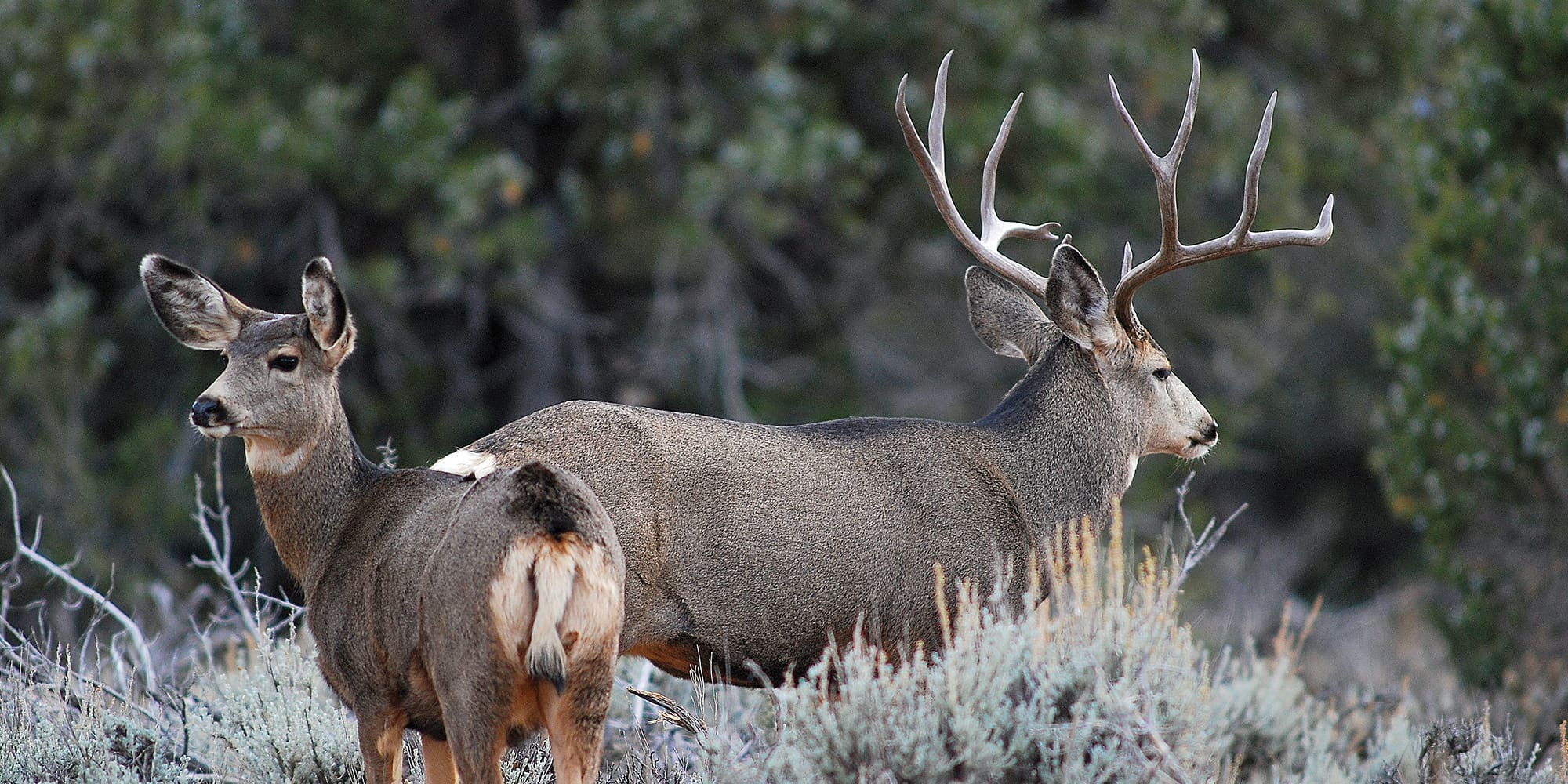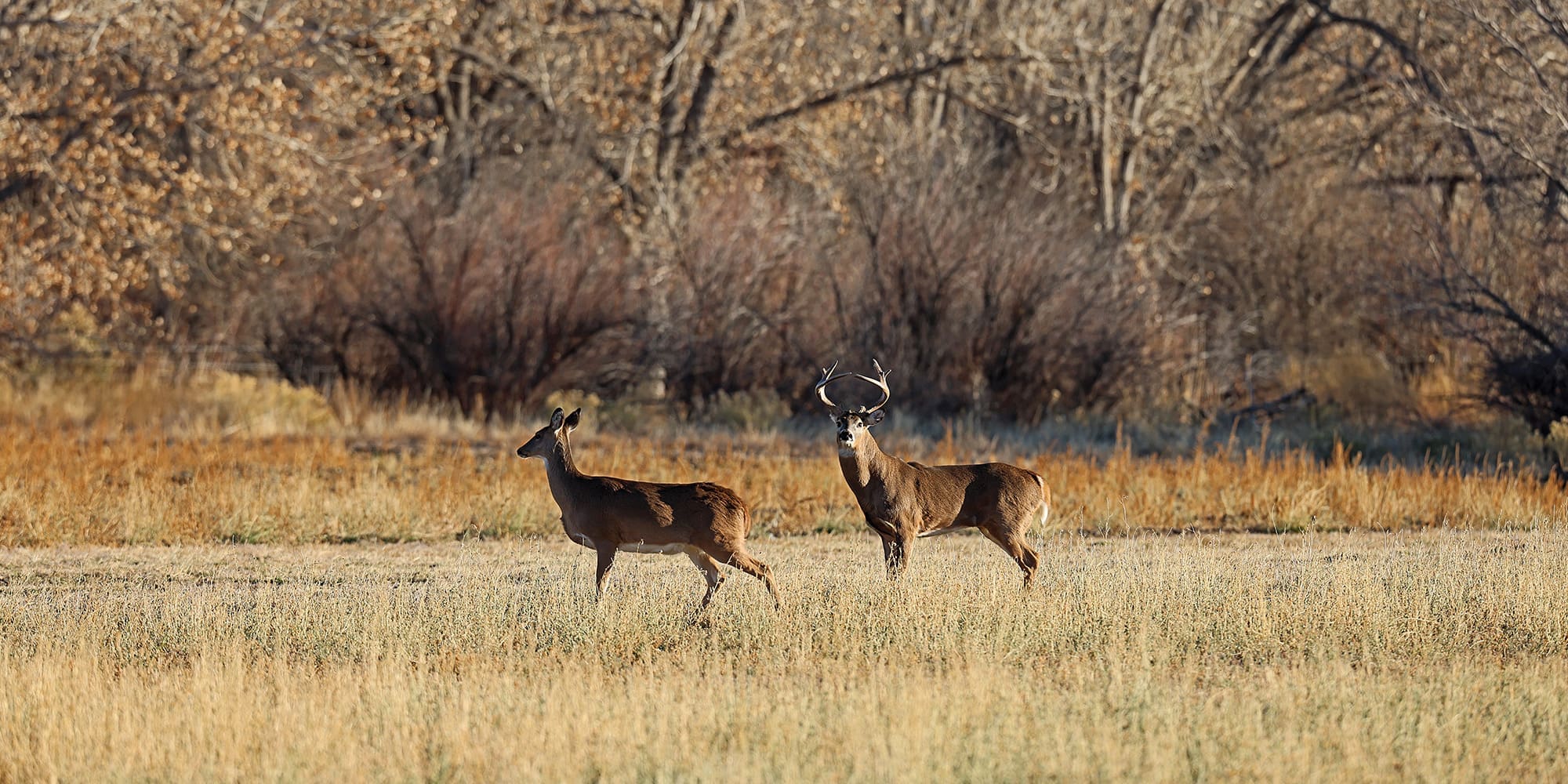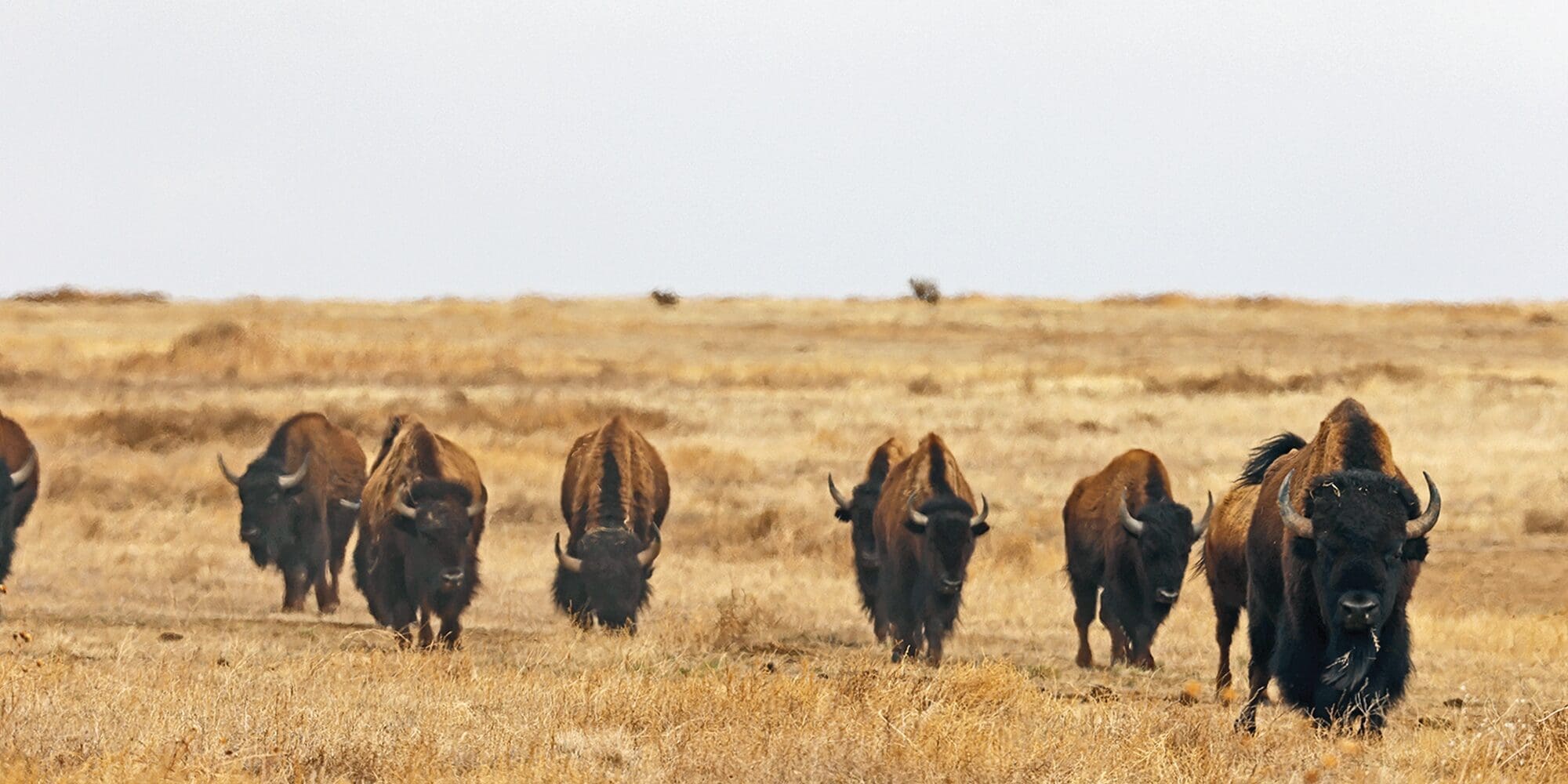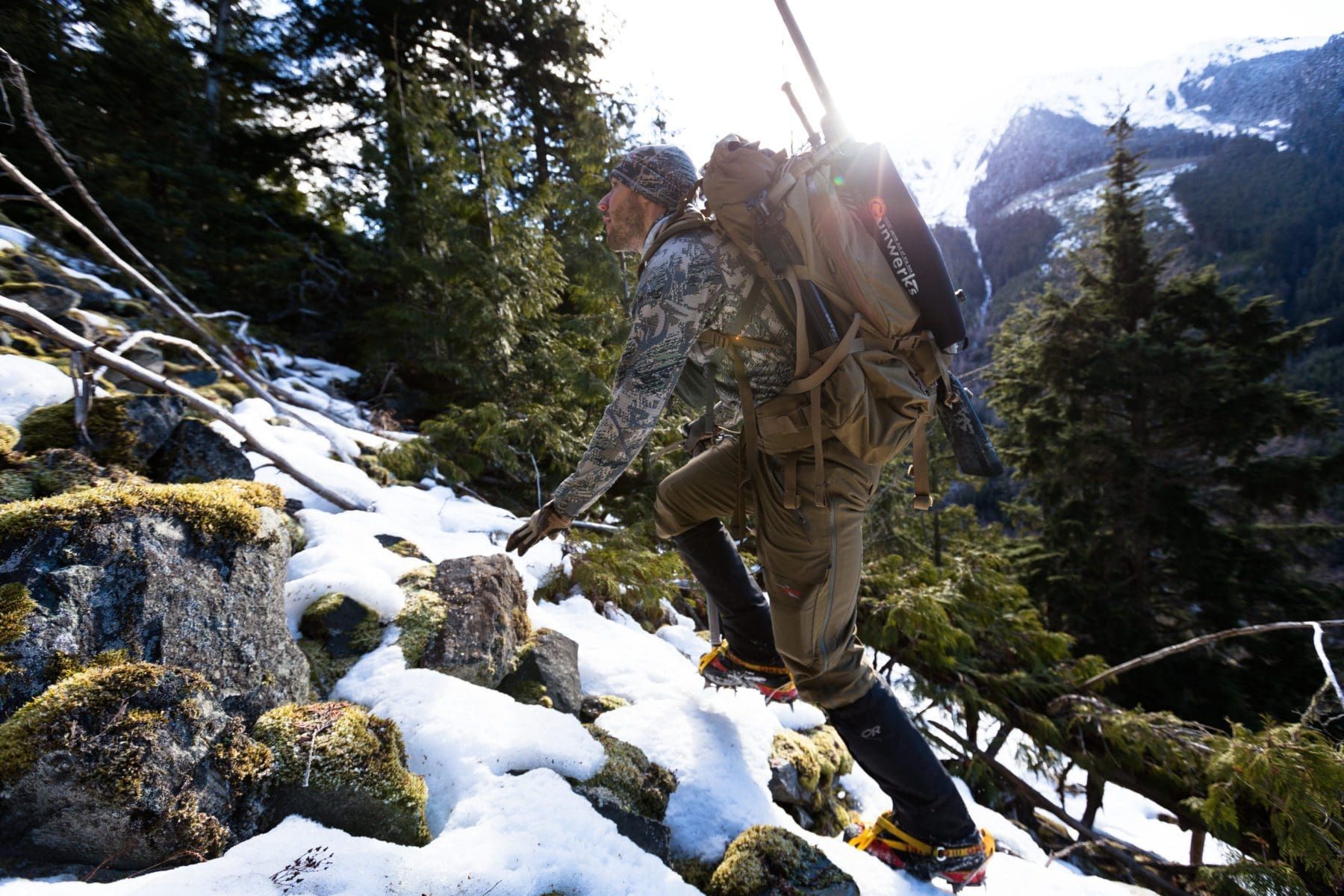
NOTICE: Certain links on this post may earn a commission for Western Hunter Magazine from Amazon or our other affiliate partners when you make a purchase. Thank you for your support.
Cold Weather Layering Systems By Nolan Osborne
Mountain hunting is hardly a new pursuit. The Indigenous peoples of British Columbia, the Yukon, and Alaska have well-documented accounts of hunting mountain goats and other game long before Gore-Tex and ultralight gear came into the picture. The argument could be made, however, that it has never been more at the forefront of hunting media, nor more accessible than it is at this point in time. There is a particular allure to the mountains, and hunting in their presence, that for many cannot be found elsewhere. Those that have experienced this often find themselves continually drawn back -- like a moth to flame -- in an attempt to satiate their hunger for these rich and wild environments.
In the hunting space, clothing and gear companies have made a concerted effort to capitalize on these desires, and seeing a hole in the tapestry, a number of them dove in. Carbon fiber pack frames, ultralight tents, layering systems, and mountain-worthy boots are the new normal. Times have certainly changed since your grandfather chased sheep in his wool clothes with a trapper nelson pack board lashed across his back. Some may lament this change. But for those who welcome the seemingly non-stop onslaught of well-designed gear with open arms, it can be a daunting world to step into, particularly when it comes to late season hunts and gear management.
Hunting companies have adopted, smartly so, many of the tried-and-true rules of mountaineering, creating a myriad of technical pieces and layering systems. While tailored to the purposes of the hunter, these pieces owe their roots to the climbing and alpinism world that has long dominated the ranks of mountainous pastimes. Which brings us to the purpose of this article.
Cold Hard Facts
Late season hunting in the mountains comes with its own unique challenges. In many ways, the gear management principles you’d apply in the early season are still valid, but constant sub-zero temperatures add a layer of complexity. On a recent nine-day foray into the frozen Coastal Range of Northwest British Columbia, the JOMH team put some gear through its paces and learned some lessons along the way. For those of you who have been leery of these late season hunts in the past, hopefully, this article will help cut through some of your questions.
Before I get too deep into the weeds, it is important to shed light on a critical point. I often get inquiries from friends, acquaintances, and occasionally strangers on what pieces of gear to buy for hunting. Typically, I am the first person to say “don’t let your gear get in the way of your hunt”. If you cannot afford to spend $700 on a backpack, $500 plus on boots, and several thousand on optics, it doesn't mean that you can’t or shouldn’t go chase sheep, goats, or any other mountain game. Were it not for the fact that I spend nearly six months of the year in the mountains I almost certainly wouldn’t have the gear I do. That said, winter mountain hunts are gear intensive, and quite frankly, dangerous without the proper clothing and equipment. Simple or commonly encountered aspects of any early season hunt -- such as stream crossings -- become extremely calculated, when the temperatures approach -20C.
Layering
While it is talked about regularly, the proper application of a layering system is not as well understood as everyone thinks. Layering is arguably the most critical consideration on a winter mountain hunt. Proper selection of your layers and how they are applied will be the determining factor in successful moisture management, and therefore, your ability to both thrive (aka perform) and survive.
A layering system is not unlike a wall; a proper foundation is critical to the effectiveness -- strength -- of the system. Below is a breakdown of my system. It should be noted that these are not the only options on the market and similar results can be achieved using gear from a variety of mountaineering focused brands. That said, these pieces functioned flawlessly across a wide variety of temperatures and exertion levels over nine days and are obviously purpose built for arduous mountain hunts.
Base Layer:
- Sitka Core Heavyweight Hoody
- Icebreaker Merino boxer
- Sitka Core Heavyweight Bottom
- SmartWool Mountaineering extra heavy crew sock
Mid-Layer/Insulation Pieces:
Waterproof Shell/Outer Layer:
The merino versus synthetic debate has likely been given more airtime than Stairway To Heaven at high school dances, so I will try not to wade too deep into those waters in this piece. However, this was actually the first time I have run a fully synthetic system (minus boxers and socks), and I wasn’t disappointed.
Up until recently, I lived and hunted in the coastal temperate rainforests of Vancouver Island, home of the wettest place in North America, Henderson Lake, with a whopping annual precipitation of 260 inches. Suffice it to say I am used to cool, wet, environments. In the four years I lived there, I came to believe that merino was king. Merino wool is naturally antimicrobial, moisture wicking and its ability to keep you warm when wet has resulted in me owning more pieces of merino clothing than I have years on this planet. Merino certainly has its place in the mountains -- I swear by merino socks and underwear -- and quite often have merino pieces in my layering system.
Synthetics, however, have the upper edge when it comes to drying time, and moisture management is undoubtedly the most critical aspect to keeping yourself safe and hopefully successful in these winter endeavors. The purpose of your base layer is to insulate you and wick sweat away from your body and having a system that can do that while still drying quickly is a no-brainer in these environments. Irrespective of camo pattern, brand, or material, your base layer has this one crucial purpose.
For reasons that were highlighted in the Dynamic Rewarming Drill video we put together last year, synthetics reign supreme on a hunt of this sort. I chose to wear synthetic long underwear and pants underneath my rain shell, however, others in our group simply ran long underwear and the shell pant. Both setups work, so that decision comes down to personal preference. What is important is that your base-layers are tight fitting and do their job -- wick moisture. Additional layering is largely dependent on the physical output (exertion) or lack thereof depending on the required task, hiking versus glassing for example. The contrast between your internal environment and the temperatures in which you will be operating will also of course dictate the number of layers you apply in any given scenario.
A few members of the party found that the Kelvin Active jacket -- a breathable lightweight Polartec insulation piece -- performed admirably, shining in both its breathability while hiking, and short drying time. Topped off with a breathable Gore-Tex shell, you have a system that wicks moisture away from your body while also keeping moisture and cold air from your external environment out. To be clear, this is for high-output scenarios. The Kelvin Active is not designed to be a primary (aka heavyweight) insulation piece for a winter hunt.
Now it would be naive to assume that you will be sweat free in any high-output winter activity, especially when carrying a loaded pack. This is where your heavyweight insulation pieces come into play, and ours certainly were put through the ringer. Whenever we stopped for extended periods of time to glass, take food breaks, or set camp, the heavy insulation would come out. In my case, the Kelvin Down Hoody -- down/synthetic blend -- and the Kelvin Lite Pant -- pure synthetic -- became my best friends. At the end of a hike and around camp in the evening, we lived in our heavy insulation pieces. Typically by the time I had my tent site dug out of the snow, set up, and a Mountain House boiled I would be nearly dry; the balmy jacket and pants harnessing body heat and cooking my system from the inside out. For the heavyweight insulation layers, my recommendation is to go with a synthetic/down blend for the upper body and a pure synthetic insulation piece for pants as the constant snow exposure requires a more versatile and moisture resilient piece on the legs. There are high quality hydrophobic down garments on the market that I often run, but hydrophobic does not equate to waterproof, and they require more maintenance in the field to perform.
Sleeping System
Currently, the backpacking/backcountry tent market is flooded with excellent options at varying price ranges for ninety-five percent of user’s needs. Winter backpacking for nine days in the Northern Coastal Mountains of British Columbia, however, does not fall under that ninety-five percent. This is not an environment that you want to be testing your ultralight one-person summer backpack tent in. Robust double-wall tents that can handle snow loads and wind, with ample room for gear storage are key, and our group ran a mix of Hillebergs on this hunt.
Freestanding tents are the best choice due to their versatility, though with proper snow-stakes -- or tree branches, ice axes, and trekking poles in my case -- the non-freestanding models also work. So long as your tent is durable and in good tack, and your camp locations appropriate for your tent, this one is pretty straightforward. The main objective here is to keep you and anything inside the tent relatively dry and sheltered from the elements.
Sleeping bags and pads are often a highly personalized topic, but regardless of what you may or may not believe, synthetic bags are far superior to down bags in these environments. Hydrophobic down has come a long way in recent years, but when cold weather meets moisture, it still does not surpass the insurance that a synthetic sleeping bag gives you. There were a few in our party that made do with down bags combined with bivy sacks, though they still found their bags lost loft and were forced to dry them out in front of the fire on numerous occasions.
Utilizing the same principles as the synthetic layering system, a synthetic sleeping bag allows you to sleep comfortably regardless of how wet it or the clothing you wear inside it is. I have long lost count of the number of nights I have crawled into my sleeping bag with damp base layers on and woke up in the morning dry as the desert air at high noon. Certainly, there are environments where this is not of great concern, and I do have a 32F down bag in my arsenal for those occasions, but I gladly pack the extra weight of the synthetic bag more often than not as its versatility is unparalleled in my eyes. An added benefit to synthetic bags is their incredibly low cost by comparison, as most bags in this category run under $200 USD.
Our party ran a range of 20F through 0F sleeping bags which functioned well, when combined with the heavyweight insulation pieces on the colder nights -- where needed -- to bolster the insulation levels. I personally prefer a warmer sleeping bag, as I find it easier to thermo-regulate with the zipper than to wake up in the middle of the night and add layers, but that’s just a personal choice.
Sleeping pads are a key component of a solid sleep, especially when the mercury drops. There are more pad options out there now than ever, and how you sleep will likely steer your selection with these. I have been using a Thermarest NeoAir Xtherm now for three years -- in the neighborhood of 250 nights -- and have no complaints. At fifteen ounces, it’s barely noticeable in my pack and still plenty thick for sleeping on my side or providing insulation on cold winter nights. The most important factor here is R-Value, as the higher the rating the warmer you will sleep. Outside of R-Value and thickness, it's going to come down to personal preference. Some prefer extra-thick pads with lower R-Value or find the ultralight pads too noisy, or the material too slippery. When choosing a sleeping pad, consider that a solid sleep goes a long way towards keeping your mental state positive and sometimes the lightest, smallest pads aren’t the best option.
Too often I feel that hunting media strives to portray every hunt as if it were life-threatening and “extreme”, with danger lurking behind every decision. You see it in writing, in films, and in photos. The vast majority of these instances I have read about or watched, can be boiled down to operator error -- inexperience – and, admittedly, that comes with the territory of pushing one's boundaries.
It is natural to think that someone on their first sheep hunt, crossing a talus slope with rocks rolling away from them, might in-fact feel as though they are on the cusp of life and death, and therefore portray the story as such in their writings. It is a trend in the industry that leaves a bitter taste in my mouth, and one I wish to push back against. Hunting isn’t without risk or consequence, but it is also something that we do because we enjoy it, love it, and the mountains bring a sense of peace and tranquility. That said, backpacking in the backcountry in the dead of winter can have serious consequences, not the least of which is hypothermia. All of the systems I have discussed above will help mitigate excess moisture from accumulating over the course of a late season hunt and -- barring an unplanned swim in a frozen creek -- erase any potential concerns of hypothermia.
Fire
Now you may be wondering, what about fire? With the proper application of layering systems and moisture management science, a fire is something you will undoubtedly welcome, but it will not be critical. While there were a few of our crew running down bags that likely would have had some real problems if we were without fire, those of us with synthetic bags would have had zero issues. The right apparel system with the right sleeping bag is sufficient to both survive and thrive on a hunt of this nature without fire. That said, fire is an exceptional morale booster, and there is something comfortingly primordial about watching the flames flicker under the waning moonlight in the mountains.
If you haven’t already figured it out, fire starters are indispensable in wet, snowy environments. I’m sure there are a million different products out there, I have used ZIP cubes extensively and usually have a handful stuffed in my pack or saddle-bag throughout the guiding season. At approximately five dollars for a forty pack, they are more than worth packing around. South facing timbered slopes above the valley bottoms that will still get decent sun exposure during the shorter days of winter hold substantially greater amounts of burnable firewood than the river bottom -- as we were to learn -- and old broken off tree stumps on these slopes create inferno’s that last through the night. Late season hunts mean the daylight hours are short and nothing improves morale like a roaring fire, so take the time to find a campsite that has good firewood, and you will be happier -- and dryer -- for your efforts.



